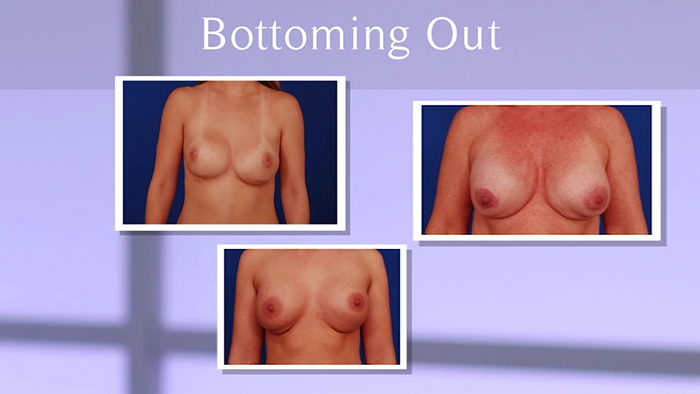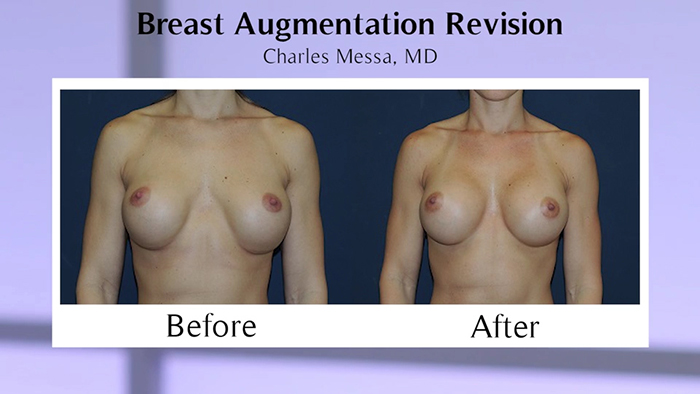Breast augmentation surgery is undeniably one of the most popular cosmetic surgical procedure in the world, according to the the American Society of Aesthetic Plastic Surgery (ASAPS). Unfortunately, some of the women who receive implants wind up requiring additional or revision surgery, often due to the fact that their implants shift position over time. Dr. Charles Messa of Weston, FL discusses some of the reasons why this happens and what can be done to prevent it.
by Katherine Stuart
and Charles Messa, MD
What Causes an Implant to Move?
An implant can move or shift position for any number of reasons. “A lot of times, what happens is not the fault of the surgeon or the patient,” explains Messa. It’s due to the fact that an implant is being placed into thin, soft tissue that – with help from gravity – stretches over time, adversely affecting the position of the implant. In order to prevent this, it is paramount that a surgeon choose the appropriate size implant for a patient’s anatomy. Many of the complications that require breast revision surgery result from an implant that is too large for the patient’s tissue. With time, there is a progressive thinning of the tissue, particularly along the lower pole of the breast, or the area from the nipple to the crease. This is often referred to as “bottoming out”. It can also happen when the breast pocket that was created for the implant during the original surgery is too large, allowing the implant to actually drift down below the crease. The result is unsightly, asymmetrical breasts.
In the cases where the implant has stretched the tissue because the implant is too large, patients will often need revision surgery to reestablish support along the crease. This can be done with a capsulorrhaphy in which the inside breast pocket is sewn to the chest wall to make it tighter. In cases where the implant has moved because the patient’s soft tissue can’t support it, the surgeon can insert a surgical mesh structure such as SERI silk or GalaFLEX mesh which act like an internal bra, supporting the implant in the short term while the patient’s own tissues grow around it to provide permanent support.
Choosing the Right Surgeon Can Prevent Problems
When deciding whether or not to have breast augmentation surgery, it is vital to choose a board certified plastic surgeon with the experience and training to prevent complications from occurring in the first place. You want to find a surgeon who will help you choose the proper implant size, taking into consideration your individual anatomy, lifestyle and desired outcome, and placement – either above or under the muscle – and who will then be meticulous in his or her pocket dissection. Why? Because if all of the above are executed correctly, many of the post op complications that require revision surgery can be avoided.
If you do need revision surgery, it is important that you wait until you’ve completely healed from your original procedure. If you don’t, more complications may occur. Messa tells his patients to, “wait a minimum of 6 months from the original surgery.” If the patient is still experiencing changes at 6 months, he may have them wait for a year. Patients often don’t know exactly what is wrong with their breasts, they simply come in saying, “I just don’t like my breasts”. It is up to the surgeon to figure it out by asking specific questions and conducting a physical exam. Messa tries to stay away from the catch phrases that are thrown around on the internet such as “bottoming out” or “double bubble” and explain the condition anatomically so that, “they understand what I have to do to make it better.”
















Facebook
Twitter
Instagram
YouTube
RSS